|
|
|
HOME
|
US Navy -
ships
|
US Navy - air
units
|
USMC - air
units
|
International
Navies
|
Weapon Systems
|
Special Reports |
|
|
|
|
|
United Kingdom - Royal Navy Fearless class Landing Platform Dock |
|
|
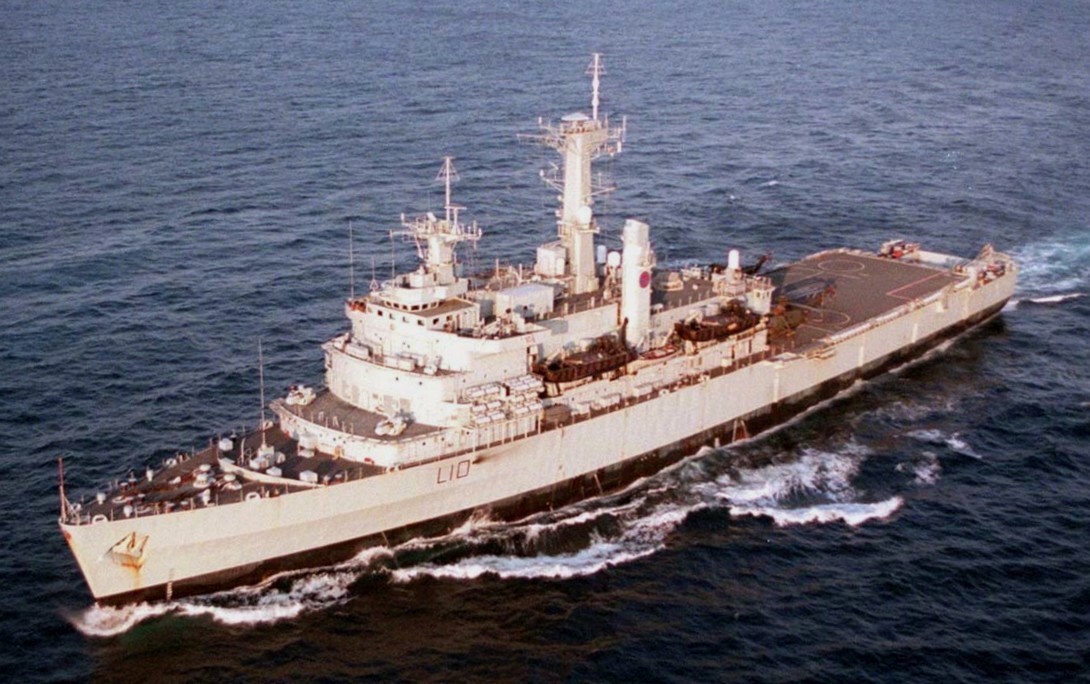 |
|
|
| Ships: |
|
L 10
HMS
Fearless
(1965) L 11 HMS Intrepid (1967) |
| Specifications: |
|
Length:
158,5 meters (520 ft)
Beam: 24,4 meters (80 ft) Draft: 6,3 meters (21 ft) Displacement: 12310 tons (full load) Speed: 22 knots (41 km/h) Range: 5000 NM (9260 km) at 20 knots (37 km/h) Complement: 550 (ship) / 400 troops (normal) / up to 700 troops, max. Propulsion: 2 x English-Electric steam turbines 2 x Babcock & Wilcox boilers (22000 shp) 2 shafts / 2 propellers Armament (as built): 4 x GWS-20 Sea Cat SAM missile systems 2 x Bofors 40/60 guns Aviation: up to 5 Westland Wessex helicopters Boats & Landing Craft: 4 x LCM-9 medium landing craft in dock / 4 x LCVP light landing craft on davits |
|
|
|
The Fearless class amphibious assault ships were the first
purpose-built amphibious warfare vessels in the Royal Navy. The
class comprised two ships: HMS Fearless and HMS Intrepid. Designed as Landing Platform Docks, they were designed to transport and land troops by sea either using Landing Craft Utility or helicopters. As constructed, the ships have an internal dock that is accessed via the stern - while in port, vehicles can drive up the stern ramp and into the internal vehicle decks. At sea, the ships could partially submerge themselves at the stern, flooding the internal dock and allowing landing craft to come right up to the edge of the vehicle deck. Each ship carried four LCUs in the stern dock, with four smaller landing craft on davits on the superstructure. They provided accommodation for up to 400 troops, which could be increased to 700, if no vehicles were carried. HMS Fearless (L 10): HMS Fearless (L10) was in service from 1965 until 2002. She was based in HMNB Portsmouth and saw service around the world over her 37-year life. She was the last steam powered surface ship in the Royal Navy. Service history: Fearless was the first purpose built LPD used by the Royal Navy. Built in Belfast at the Harland and Wolff yard, she was launched in 1963 before undergoing trials and commissioning in 1965. Following commissioning, her first operational tasking was acting as a command platform for British Counter-Terrorism operations in Aden, operating Royal Air Force aircraft and the Irish Guards prior to the British withdrawal as Flag of a 25 platform task group. Following the Aden experiences, in 1968, she was the venue for talks between Harold Wilson and Ian Smith over the future of Rhodesia. The latter had unilaterally declared independence(UDI) from Britain due to Britain's insistence on the removal of white minority rule. In 1972, Fearless ferried several Centurion AVRE demolition vehicles, derived from the Centurion tank to Northern Ireland to be deployed there as part of Operation Motorman. Fearless featured in the 1977 James Bond film The Spy Who Loved Me as the ship which picks up Bond's escape pod. The filming took place the previous year near the island of Malta. Fearless was part of the British naval force committed to Operation Corporate, the 1982 Falklands War. Fitted with modern satellite communications equipment, it hosted the staff of amphibious force commander Commodore Michael Clapp (Commodore Amphibious Warfare (COMAW)), and Commanding Officer 3 Commando Brigade, Brigadier Julian Thompson and his staff, as well as elements of the landing force. As a result of the conflict, Royal Marine Coxswain Corporal Alan White received a commendation from the Task Force Commander, Admiral Sir John Fieldhouse, for his part in rescuing 41 crew from HMS Antelope using Foxtrot 7, one of four LCVP landing craft carried by Fearless. Foxtrot 7 is now located in the Royal Marines Museum in Portsmouth, with detailed accounts from Corporal Alan White of the missions he took part in, including the landings at San Carlos. She was placed out of commission for three years in 1985 prior to a two-year refit at Devonport, recommissioning in 1991. During this refit, her 1940s-vintage 40mm Bofors cannon and 1960s-vintage Sea Cat anti-aircraft missile launchers were replaced by 20 mm BMARC and Phalanx CIWS guns. From 1991 until 1995 she supported the sea training phase of initial officer training, undertaken at Britannia Royal Naval College, as part of the Dartmouth Training Squadron. She was due to undertake an operation in the Gulf, but that was handed to HMS Ocean in 2000. Her last major duty was to take part in amphibious exercises shortly before decommissioning. HMS Intrepid (L 11): HMS Intrepid (L11) served from 1967 until 1999. Based in HM Naval Base, Devonport, Plymouth, Devon and HM Naval Base Portsmouth, she saw service around the world over her 32-year life. In the process of being decommissioned for sale, she was rapidly returned to service to sail as part of the British operation to retake the Falkland Islands after the Argentine invasion in 1982. She landed troops in amphibious assaults on the Islands and the Argentine surrender was signed on her deck at the conclusion of the Falklands War. Service history: Intrepid was the second of her class of purpose built LPDs used by Royal Navy. She was built in Clydebank, West Dunbartonshire, at the John Brown & Company yard and was launched in 1964 before undergoing trials and commissioning in 1967. She was the last ship built by John Brown & Co for the Royal Navy. Intrepid became the first Royal Navy warship to be fitted with satellite communication equipment in 1969. As a result of defence cuts, Intrepid went into reserve in 1976, being brought back into active service in 1979 to allow Fearless to be refitted. It was announced in 1981 that the two LPDs were to be deleted, with Intrepid undergoing decommissioning in 1982 at the outbreak of the Falklands War. After decommissioning, the Royal Navy was due to sell Intrepid to Argentina. However, Intrepid was brought back into commission, with her ship's company recalled by Commander Bryn Telfer (the Executive Officer), and Malcolm MacLeod, the crew gladly returned to form part of the task group committed to Operation Corporate, the British effort to recapture the islands. Intrepid was commanded by Captain Peter Dingemans. With elements of 3 Commando Brigade embarked, Intrepid took part in the amphibious landings at San Carlos Water. HMS Intrepid was under attack in San Carlos Water on 25 May 1982, with a few fatalities, mainly Royal Marines. The Nordic Ferry was also under attack. She came under heavy air attack once again during the operation, and was the main participant in the landings at Bluff Cove on 6 June. Margaret Thatcher and Sandy Woodward commended the efforts of the ships involved in the San Carlos attacks. She Intrepid would be the last ship to arrive, the last piece in the jigsaw, and so all the timings depended on her. As well as being one of the warships used for imprisoning the Argentinian prisoners of war, the surrender ending the Falklands conflict was signed on Intrepid's deck. Intrepid was refitted at Devonport Royal Dockyard between January 1984 and June 1985, with two Sea Cat launchers removed, with twin 30 mm anti-aircraft mounts and two single 20 mm cannon added. From June 1985 until 1990 she supported the sea training phase of initial officer training, undertaken at Britannia Royal Naval College, as part of the Dartmouth Training Squadron. During the early years of their service, Intrepid and her sister ship Fearless carried a number of soldiers of the regular Army as part of their fixed crew. This happened because in the late 1960s and very early 1970s, the strength of the Royal Marines had been cut severely by the then Labour government (Harold Wilson) and the Marines were unable to fulfill a number of the amphibious liaison posts on board the ships. In the case of HMS Intrepid, the army crew included a signal troop (661 Signal Troop, Royal Signals), a detachment of Royal Engineers (beach clearance duties), a small team of drivers from the Royal Corps of Transport (vehicle deck handling) and REME recovery mechanics who operated the BARV - Beach Amphibious Recovery Vehicle. This was a tracked recovery vehicle, based on a Second World War Centurion Tank chassis, with built-up sides. Its function was to recover drowned vehicles during a beach assault. The Army element of the crew of HMS Intrepid was in place from its commissioning in 1967, to December 1973, by which time the strength of the Royal Marines had been substantially improved and they were then able to fulfill all the above posts themselves. Intrepid was placed in reserve status late in 1990, when Fearless completed an extensive refit. Intrepid was in poor physical condition by this time, which prevented a similar upgrade, and was laid up at HM Naval Base Portsmouth. Intrepid was used as a source of spares for her sister ship, HMS Fearless. She was decommissioned in 1999 and awaited her disposal, by scrapping, in Fareham Creek, Hampshire. On 12 February 2007, the MoD announced that HMS Intrepid was to be recycled at a British facility. Leavesley International was selected as the preferred bidder, pending license acquisition. The contract aimed to ensure that the ship was disposed of responsibly, and in full compliance with international environmental legislation. Having received the required planning permission and environmental licences for disposal, Intrepid left Portsmouth for her final journey to Liverpool on 13 September 2008. Having been previously suggested as potential diving site on the southcoast, various veterans of the Falklands War started a petition on the 10 Downing Street website to preserve the ship as a memorial to the conflict. But in late January 2009, the Daily Mail published an article showing the half demolished ship in Liverpool Docks, which was reported to be on target to be 96% recycled. source: wikipedia |
|
|
| Ships: |
|
L 10 HMS Fearless Builder: Harland & Wolff, Belfast, Northern Ireland, UK Laid down: July 25, 1962 Launched: December 19, 1963 Commissioned: November 25, 1965 Decommissioned: March 18, 2002 Ship's motto: EXPLICIT NOMEN (the name says it all) Fate: scrapped in Ghent, Belgium in 2008 L 11 HMS Intrepid Builder: John Brown & Company, Clydebank, Scotland, UK Laid down: December 19, 1962 Launched: June 25, 1964 Commissioned: March 11, 1967 Decommissioned: August 31, 1999 Ship's motto: CELA VA SANS DIRE (that goes without saying) Fate: scrapped in Liverpool |
|
images |
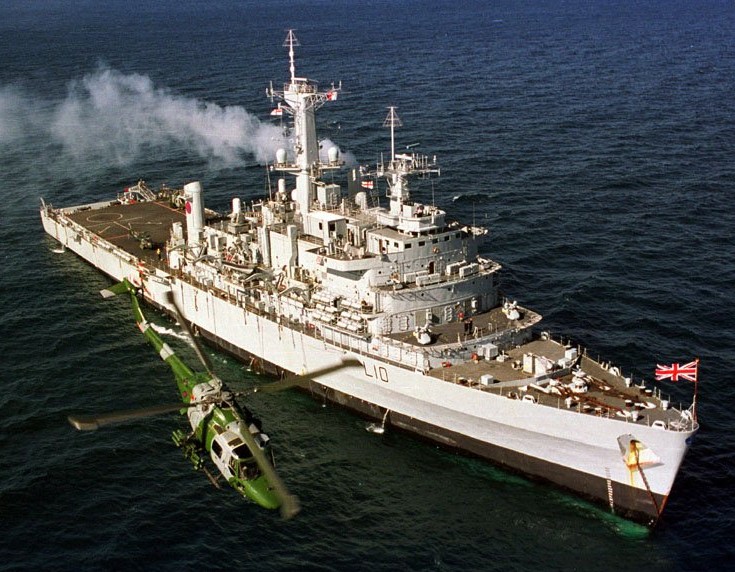 HMS Fearless (L 10)  HMS Fearless (L 10) 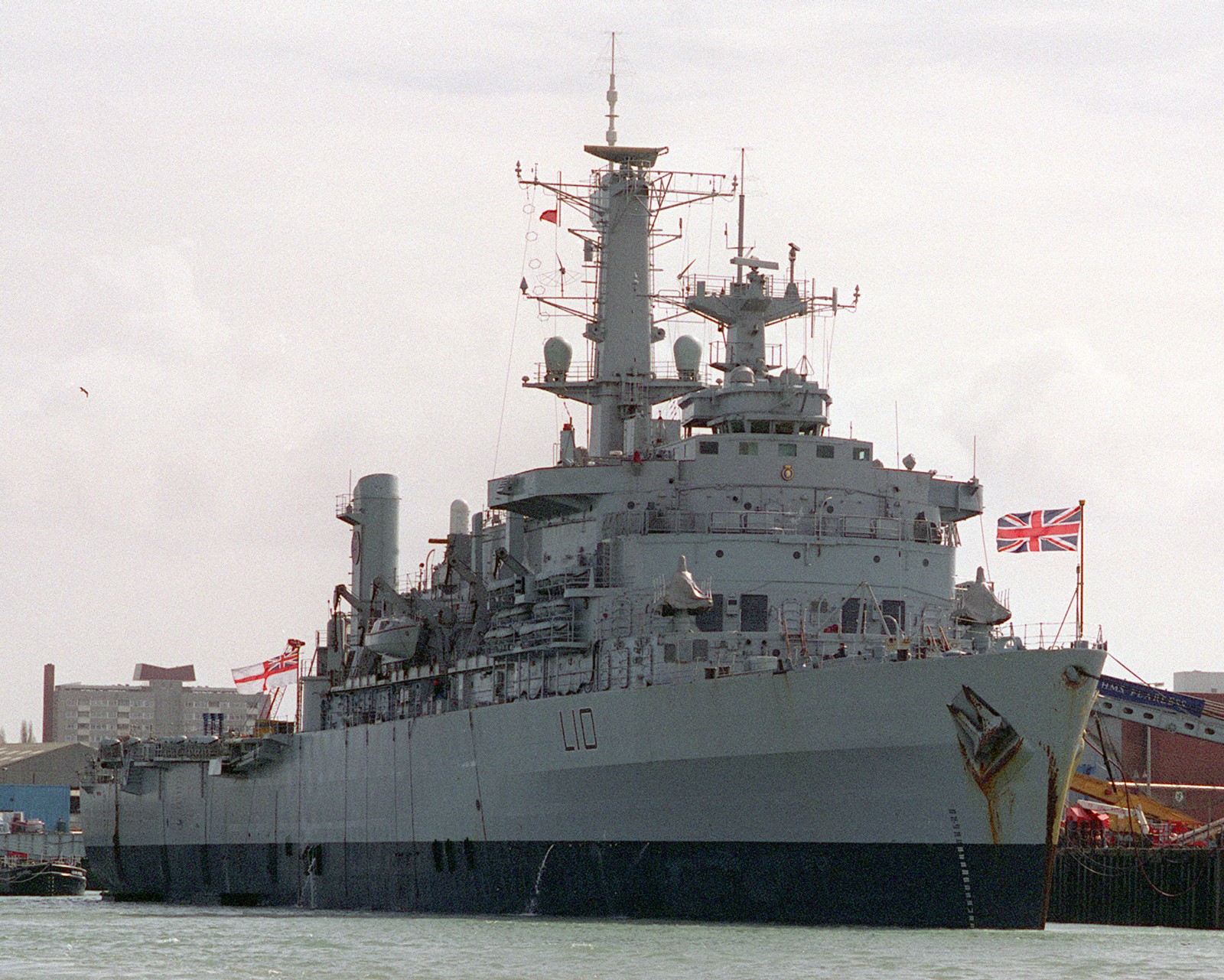 HMS Fearless (L 10) 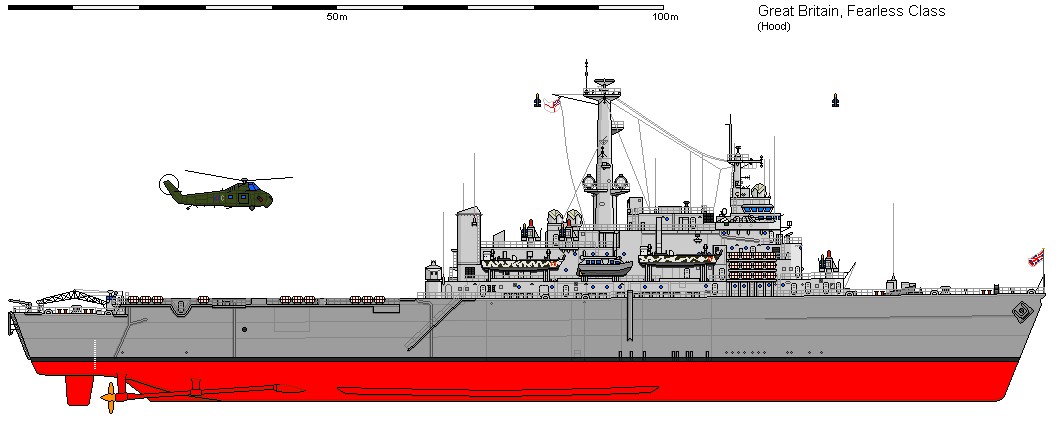 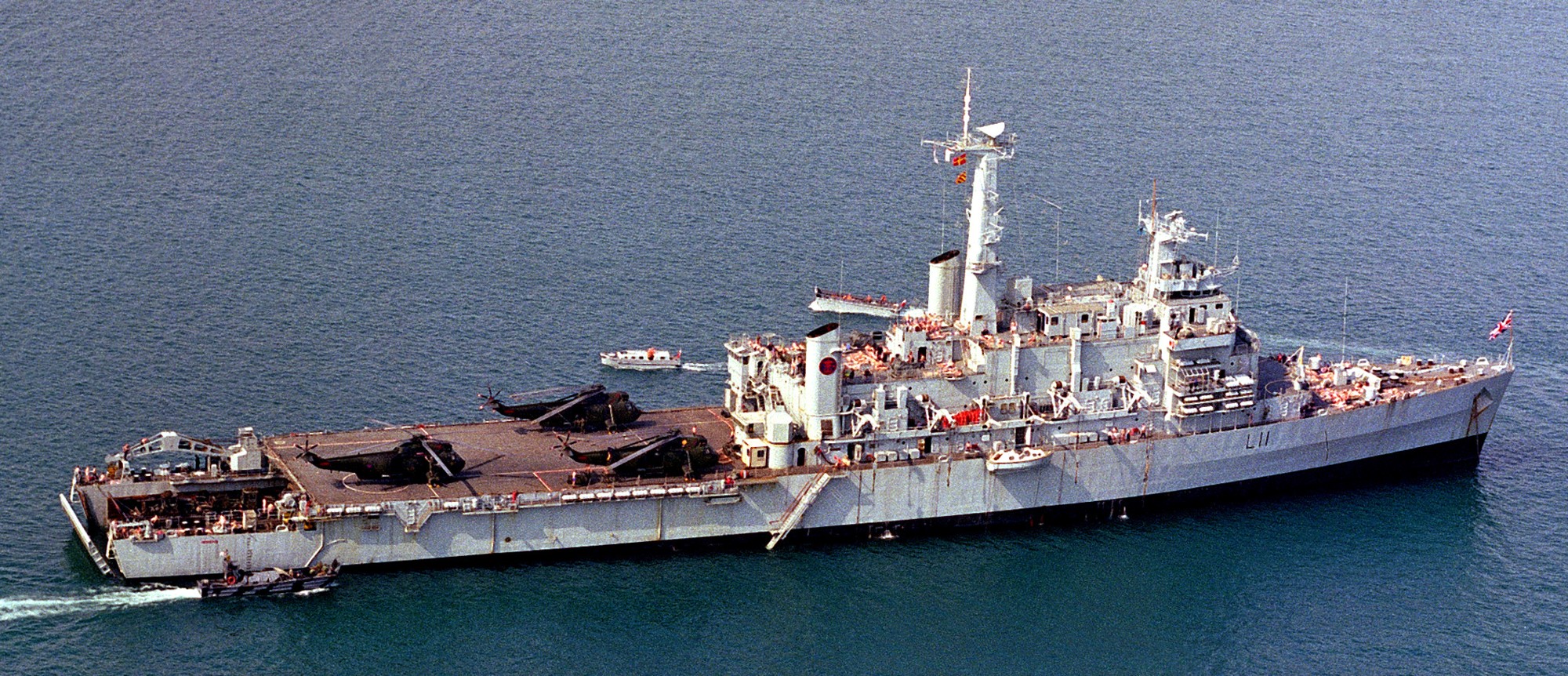 HMS Intrepid (L 11) 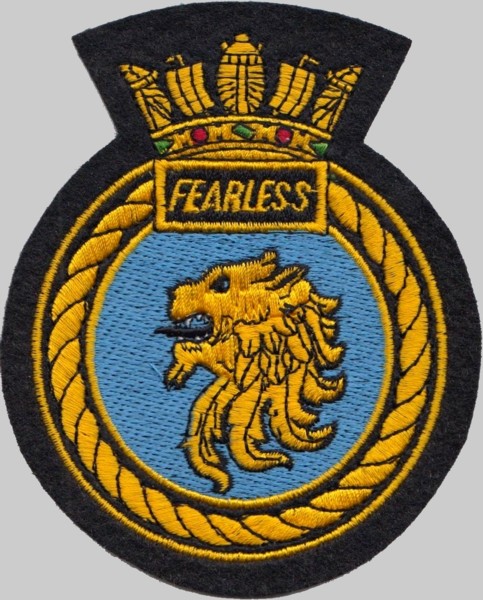
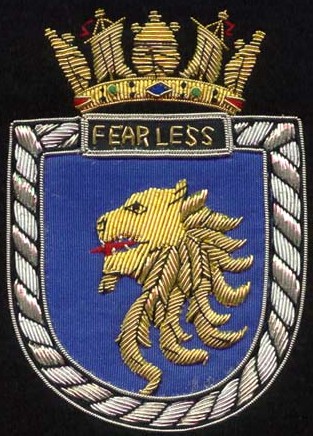 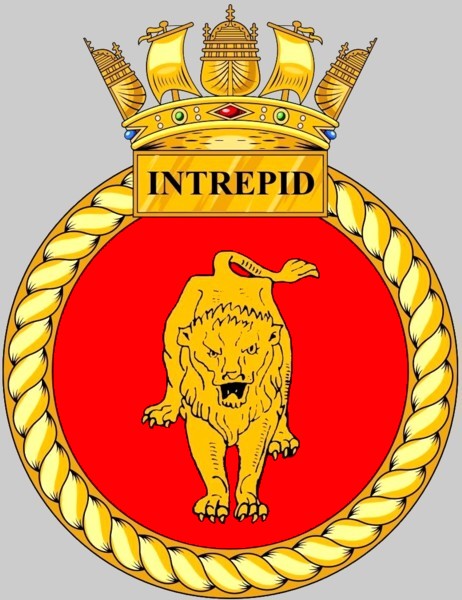
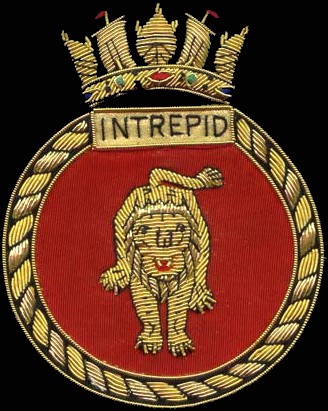 |
|
|
|
|
seaforces.org
|
Royal
Navy start page
| |
